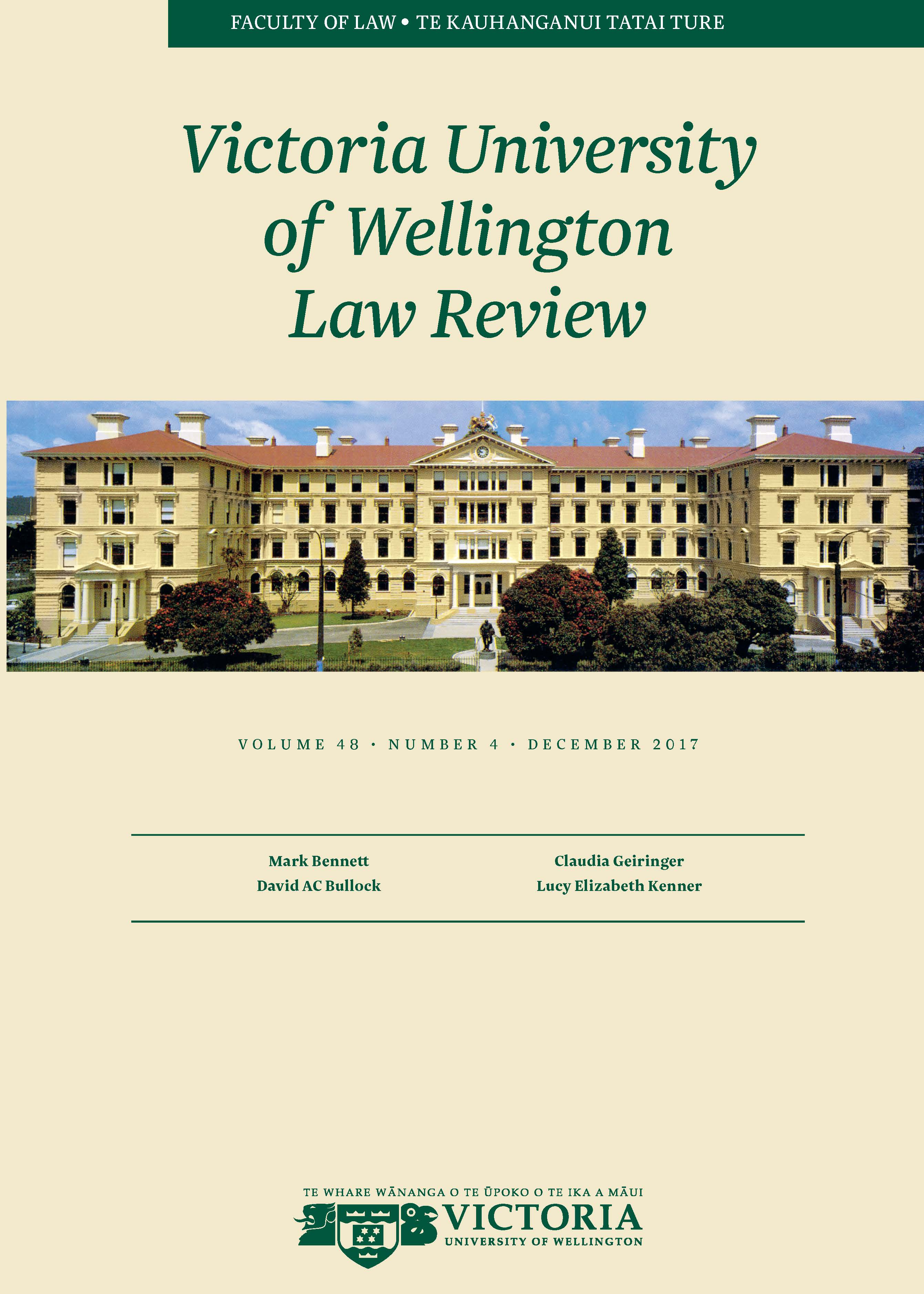Problems in Residential Tenancy Law Revealed by Holler v Osaki
DOI:
https://doi.org/10.26686/vuwlr.v48i4.4730Abstract
This article argues that the recent series of judgments in the Holler v Osaki litigation reveals concerning features of our residential tenancy law contained in the Residential Tenancies Act 1986 and its application by the Tenancy Tribunal and the courts. The law relating to residential tenancies is important: it regulates both tenants' ability to access the basic need of shelter and to satisfy their desire for home, and the financial investments of landlords. It is meant to allow landlords and tenants to understand their rights and obligations so that they may apply the law to their situations without legal assistance. However, Holler v Osaki illustrates the vagueness and therefore uncertainty concerning key legal rules within the Act, which led to the pre-existing understanding of the law being upended and the paralysis of the Tenancy Tribunal's ability to deal with careless damage. This article also highlights inconsistencies in the decisions of Tenancy Tribunal adjudicators, who applied completely different interpretations of the law to substantially identical facts.
Downloads
Downloads
Published
How to Cite
Issue
Section
License
Authors retain copyright in their work published in the Victoria University of Wellington Law Review.


